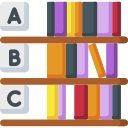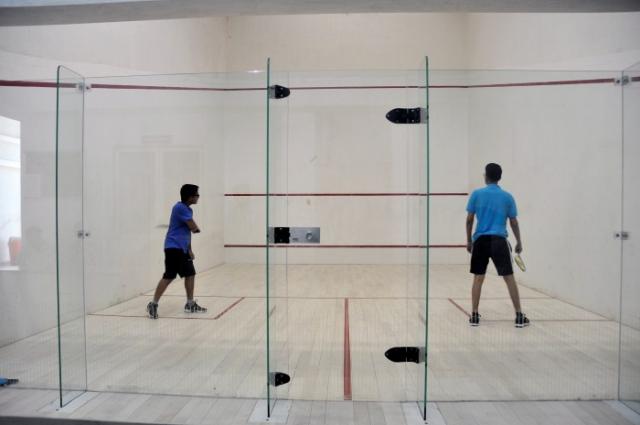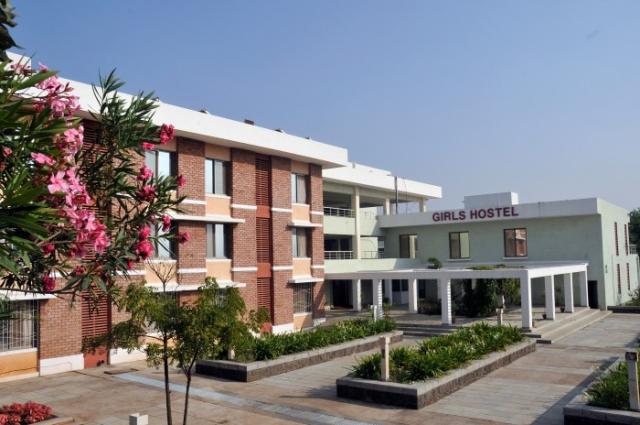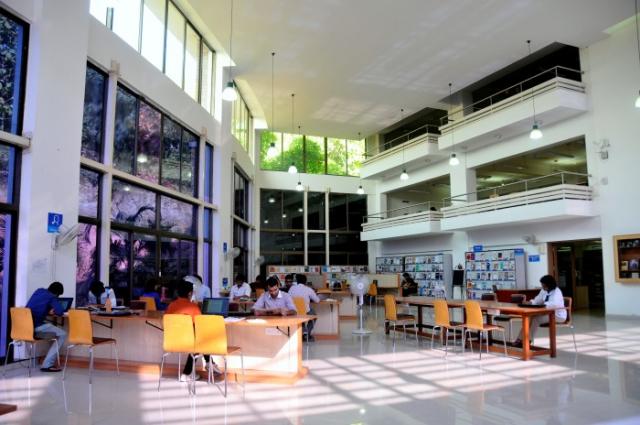
SIU Symbiosis International University-Lavale, Pune
|
Established In |
2002 |
|
City |
Pune |
|
Also, Know as |
SIBM, Pune |
|
Recognized By |
UGC |
|
Total Faculty |
146 |
|
Entrance Exam |
SNAP |
|
Course Offered |
MBA, MBA Executive |
|
Salary Package |
SIBM Pune MBA Programme Highest- 30.38 LPA Average-20.14 LPA |
|
Facilities |
Library Gym Labs Canteen Sports Medical |
Symbiosis International University is a university in Pune, Maharashtra. It is a deemed university. The parent body of the institute was founded in 1971. The college has a number of institutions in various towns, including Bangalore, Hyderabad, Nagpur, Nashik and Noida and has 38 institutions under its name. A campus in Nagpur was also opened by the institute. In Asia, it was 247 in 2018, according to QS World University Rankings.
The Institute provides students with undergraduate, postgraduate and doctoral courses. Courses in law, management, informatics, medical sciences, media and communications, architecture, humanities and engineering are available.
Courses
Highlights
- Ranked 56th among best universities in India in by NIRF
- Ranking 2019 and 109th in BRICS QS World Ranking 2019
- 3rd best B-School in India in 2020.
- 1st in Pune, 6th in western India and 7th Best Private B-School in India by Business Today B school ranking 2020
- Top 10 B-School in India by India Today in 2020
- 22nd Best B-School in the Country by NIRF 2020
- 9th in the list of top 10 B-School in India 2020
Admission
|
Course |
Eligibility |
Selection Criteria |
|
Bachelor’s degree with an aggregate of 50% |
SNAP + GEPIWAT |
|
|
Bachelor’s degree with an aggregate of 50% |
Graduation scores + PI |
Scholarship Scheme:
PG Merit Scholarship
- This scholarship applies to students declared the top student in the first half
- To apply for this bursary, a student must have a minimum GPA of 7,50
- A single candidate who finishes the exam is awarded the bursary in every specialisation.
- Under this scholarship, students receive 50% of the academic fee
PG Merit Scholarship for IIT Graduates
- A total of five IIT students receive a 20% academic charge waiver
- This bond is eligible for students who have joined the SIU MBA programme
- To receive this second-year bursary, at least 7 out of 10 CGPA students are not required to be registered (internal or external) at the end of semester II.
Placements:
SIBM Pune has a special investment cell that is responsible for all investment activities. In addition to its placements, it offers its students summer internships. The Institute carried out its students successfully with placements in 2021. Over 100 companies were involved and made a total of 192 offers during the placement drive.
Recruiters:
|
|
Facilities

AC Classrooms

Auditorium

Cafeteria

Ransomware by ./M789

Sports Complex

Wi-Fi Campus

Hostel

Medical Facilities

Gym
Gallery








Contact
Symbiosis Knowledge Village, Gram: Lavale, Tal: Mulshi, Pune - 412115.
admission@sibm.edu.in
-
PGDM-Post Graduate Diploma in Management
Total Fee: INR 745000
-
B.Com Bachelor of Commerce
Total Fee: INR 240000
-
PGDM-Post Graduate Diploma in Management
Total Fee: INR 745000
-
B.Com Bachelor of Commerce
Total Fee: INR 240000
-
PGDM-Post Graduate Diploma in Management
Total Fee: INR 745000
-
B.Com Bachelor of Commerce
Total Fee: INR 240000
-
PGDM-Post Graduate Diploma in Management
Total Fee: INR 745000
-
B.Com Bachelor of Commerce
Total Fee: INR 240000
Highlights
- International Institute of Business Studies (IIBS) is an AICTE Approved college which is recognized by Ministry of HRD, Government of Indias
- IIBS rated India’s No.1 emerging B-School in placement by Samaja Parivarthana
- Faculty of IIBS consists of experienced corporate faculty with 65% Ph.D. holders
- Ranked 2nd among 'Top 10 Southern B Schools' by Silicon India, 2017
- Ranked 3rd in Placement among the Best B-School in India 2017 by Silicon India
Modern Facilities
- Smart Classroom: IIBS provides fully equipped classroom with air-conditioned, projectors, remote controlled LCD and high speed connected computers and cordless microphones
- Library: It is fully equipped by highly information recourses like latest periodicals, reference texts, management text books, national and international journals and DVDs and well organized
- Digital Library: Students of IIBS can be access the digital library through any computers by using their ID and password
- Auditorium: IIBS auditorium is fully furnished and laced with all modern devices to more impactful view
- Hostel: IIBS provides hostel accommodation for boys and girls with mesh facility
Conducting IIMs have been changed the pattern of the CAT exams several times over the years. It is extremely beneficial for the aspirants to know the CAT paper pattern as it helps in preparation and the aspirants can prepare according to the pattern and weightage of the topics.
Overview of the Exam Pattern of CAT 2020
| Mode of the Exam | Online Only |
|---|---|
| Total number of Questions | 100 |
| Total Marks | 300 |
| Duration of the Examination | 3 hours (180 minutes) |
| Sectional Division of the Paper | 3 sections |
| Types of the Questions | Both MCQs and Non MCQs |
| Marking Scheme |
For Correct Answers → +3 marks For Incorrect Answers → -1 mark For Unattempted Questions → No marks |
| Name of the Sections |
1. Verbal Ability & Reading Comprehension 2. Logical Reasoning & Data Interpretation 3. Quantitative Aptitude |
This Exam is conducted once in a year usually in the month of November on online mode and it is expected that this year this exam will held in the last week of November. The question paper contains 100 questions to be solved in 3 hours. 3 marks are assigned for correct answer and 1 mark is deducted for wrong answer in CAT Exam. English is the only medium of answering the questions. Each question consists of four choices from which only one is correct, candidates have to select the right answer from the given options.
CAT question paper consists of three sections divided as
- 1. Verbal and Reading Comprehension (VARC)
- 2. Data Interpretation & Logical Reasoning (DI & LR)
- 3. Quantitative Ability (QA)
Overview of the Exam Pattern of CAT 2020
| Section’s Name | Number of Questions | Duration (in mins) |
|---|---|---|
| Verbal and Reading Comprehension (VARC) | 34 | 60 |
| Data Interpretation & Logical Reasoning (DI & LR) |
VA → 10 Questions RC → 24 Questions |
60 |
| Quantitative Ability (QA) |
DI → 16 Questions LR → 16 Questions |
60 |
| Total | 100 | 180 minutes (3hours) |
Verbal Ability and Reading Comprehension Section
This section is a combination of two sub-sections namely Verbal Ability (VA) and Reading Comprehension (RC). The main focus of this section is on the English language skills of the candidates and how they understand and elucidate the paragraphs and Passages. This section consists of 34 questions, 10 questions of Verbal Ability and 24 questions of Reading Comprehension. Verbal ability sub-section consists of questions related to Para-jumbles, Summary based questions, Sentence Correction and Completion. The other sub-section, Reading Comprehension is based on the questions related to Vocabulary, title etc.
Logical Reasoning & Data Interpretation Section
This section is also divided into two sub-sections, one is Logical Reasoning (LR) and other is Data Interpretation (DI). A total of 32 questions are asked in this section, 16 questions from both the sub-section. LR section contains solvable questions generally from the topics like inequalities, symbol operations, direction sense test etc. On the other hand DI section is a little difficult and time-consuming section as it consists of several confusing data case lets questions. This section contains tricky question and a little mistake in understanding the case lets can lead the candidates to attempt all the questions from a particular set incorrectly.
Quantitative Aptitude Section
This section is a standalone section which comprises only numerical questions from different topics of Math. A total of 34 questions are asked in this section. This section contains questions based on Basic Arithmetic, Number System, Geometry, Algebra, Modern Math etc. The questions in this section ranges from easy to moderately high and can be answered easily with proper practice of the syllabus of Quantitative Aptitude.

|
Prof. Prabhakar H
B.Sc., PG in HRD, PG in Training & Development |

|
Prof. Prabhakar H
B.Sc., PG in HRD, PG in Training & Development |

|
Prof. Prabhakar H
B.Sc., PG in HRD, PG in Training & Development |

|
Prof. Prabhakar H
B.Sc., PG in HRD, PG in Training & Development |

|
Prof. Prabhakar H
B.Sc., PG in HRD, PG in Training & Development |

|
Prof. Prabhakar H
B.Sc., PG in HRD, PG in Training & Development |
Facilities













CAT 2020 will be conducted in the following cities:
| Port Blair | Kurnool | Nellore | Tirupati |
| Vijaywada | Visakhapatnam | Chittoor | Itanagar |
| Dibrugarh | Guwahati | Silchara | Aurangabad |
| Gaya | Muzaffarpur | Patna | Chandigarh |
| lorem | lorem | lorem | lorem |
Contact Us
#75, Muthugadahalli, Bangalore North Jala Hobli, near International Airport airport(New Airport), Bangalore ( Karnataka)
admission@iibsonline.com









